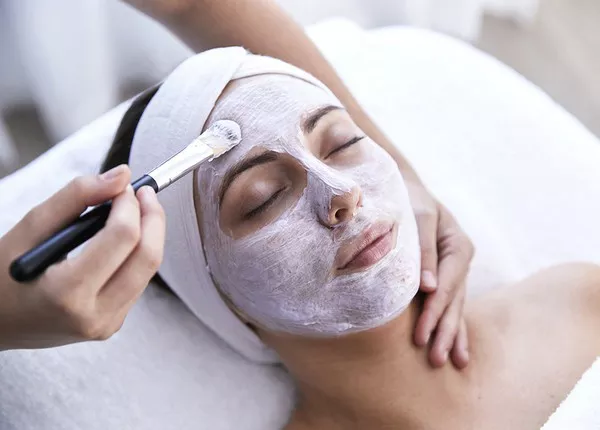Acne scars can have a lasting impact on one’s self-esteem and confidence. While acne itself is a common skin condition, the scars it leaves behind can vary in appearance and severity. In this comprehensive guide, we will delve into the different types of acne scars, understand the factors that contribute to their formation, and explore the most effective treatment options available. Whether you’re seeking solutions for textured scars or hyperpigmentation, this article aims to provide valuable insights into achieving smoother, clearer skin.
Understanding the Types of Acne Scars
1. Ice Pick Scars
Ice pick scars are narrow and deep depressions that resemble puncture marks on the skin’s surface. They are often the result of severe acne and form when inflammation destroys collagen beneath the skin.
2. Boxcar Scars
Boxcar scars are characterized by their angular and well-defined edges. They appear as depressed areas with flat bottoms and can vary in size. Boxcar scars are usually the aftermath of inflammatory acne.
3. Rolling Scars
Rolling scars create a wave-like or undulating appearance on the skin. They occur due to tethering of the skin’s underlying tissue, causing it to pull down unevenly. Rolling scars are often a result of long-term inflammatory acne.
4. Hypertrophic Scars
Hypertrophic scars are raised and can appear pink or red. They develop when the body produces excess collagen during the healing process. Unlike keloid scars, hypertrophic scars remain within the boundaries of the original wound.
See Also: What Skin Types Scar Easily: What You Need to Know
Factors Contributing to Acne Scars
1. Severity of Acne
The severity of acne plays a significant role in the likelihood of developing scars. Severe and inflamed acne lesions are more likely to lead to scar formation.
2. Delayed or Inadequate Treatment
Leaving acne untreated or not addressing it promptly can increase the risk of scarring. Early intervention can minimize the extent of scar formation.
3. Skin Type
Certain skin types are more prone to scarring due to variations in collagen production and healing responses. People with lighter skin tones tend to develop red or pink scars, while darker skin tones may experience hyperpigmentation.
See Also: What Causes Dark Spots After Acne: A Complete Overview
Effective Treatment Options for Acne Scars
1. Chemical Peels
Chemical peels involve applying a chemical solution to the skin, causing the top layer to peel off. This process promotes skin regeneration and can improve the appearance of shallow acne scars and hyperpigmentation.
2. Microneedling
Microneedling, also known as collagen induction therapy, involves using fine needles to create controlled micro-injuries in the skin. This stimulates collagen production and can lead to smoother skin texture.
3. Laser Therapy
Laser treatments, such as fractional laser therapy and intense pulsed light (IPL), target specific layers of the skin to encourage collagen remodeling and improve the appearance of scars.
See Also: Can Laser Treatment Truly Fix Scars? [Revealed!]
4. Dermal Fillers
Dermal fillers can temporarily raise depressed scars to the level of the surrounding skin. They are particularly effective for treating rolling scars and certain types of boxcar scars.
5. Subcision
Subcision is a surgical procedure that involves breaking down scar tissue beneath the skin’s surface using a needle or blade. This technique releases tethering and allows the skin to heal more evenly.
Home Remedies and Over-the-Counter Products
1. Topical Retinoids
Topical retinoids, such as tretinoin, are prescription creams that can help promote collagen production and improve skin texture over time.
2. Vitamin C Serums
Vitamin C serums contain antioxidants that can help fade hyperpigmentation and stimulate collagen production. Regular use can contribute to an improved overall skin tone.
3. Silicone Gel Sheets
Silicone gel sheets can help flatten and soften raised scars like hypertrophic scars. They create a protective barrier that supports the healing process.
See Also: What Is Silicone Scar Tape & Does It Work?
Prevention and Maintenance
1. Early Acne Management
Effectively managing acne in its early stages can significantly reduce the risk of scarring. Consult a dermatologist for appropriate treatment options.
2. Sun Protection
Sun exposure can worsen the appearance of scars and hyperpigmentation. Always use sunscreen with at least SPF 30 and seek shade when outdoors.
3. Patience and Consistency
Achieving noticeable improvement in the appearance of acne scars requires patience and consistent use of chosen treatments. Results may take several weeks or months to become visible.
See Also: How to Remove Mosquito Bite Marks: Effective Remedies
Conclusion
In conclusion, dealing with acne scars involves understanding their types, causes, and effective treatment options. Whether you’re seeking professional treatments like chemical peels, microneedling, or laser therapy, or prefer to explore home remedies and over-the-counter products, there are solutions available to help you achieve smoother, clearer skin. Remember that every individual’s skin is unique, so consulting a dermatologist to create a personalized treatment plan is crucial for achieving the best results. With a combination of informed choices, professional guidance, and consistent care, you can take proactive steps toward restoring your skin’s natural beauty and boosting your self-confidence.


